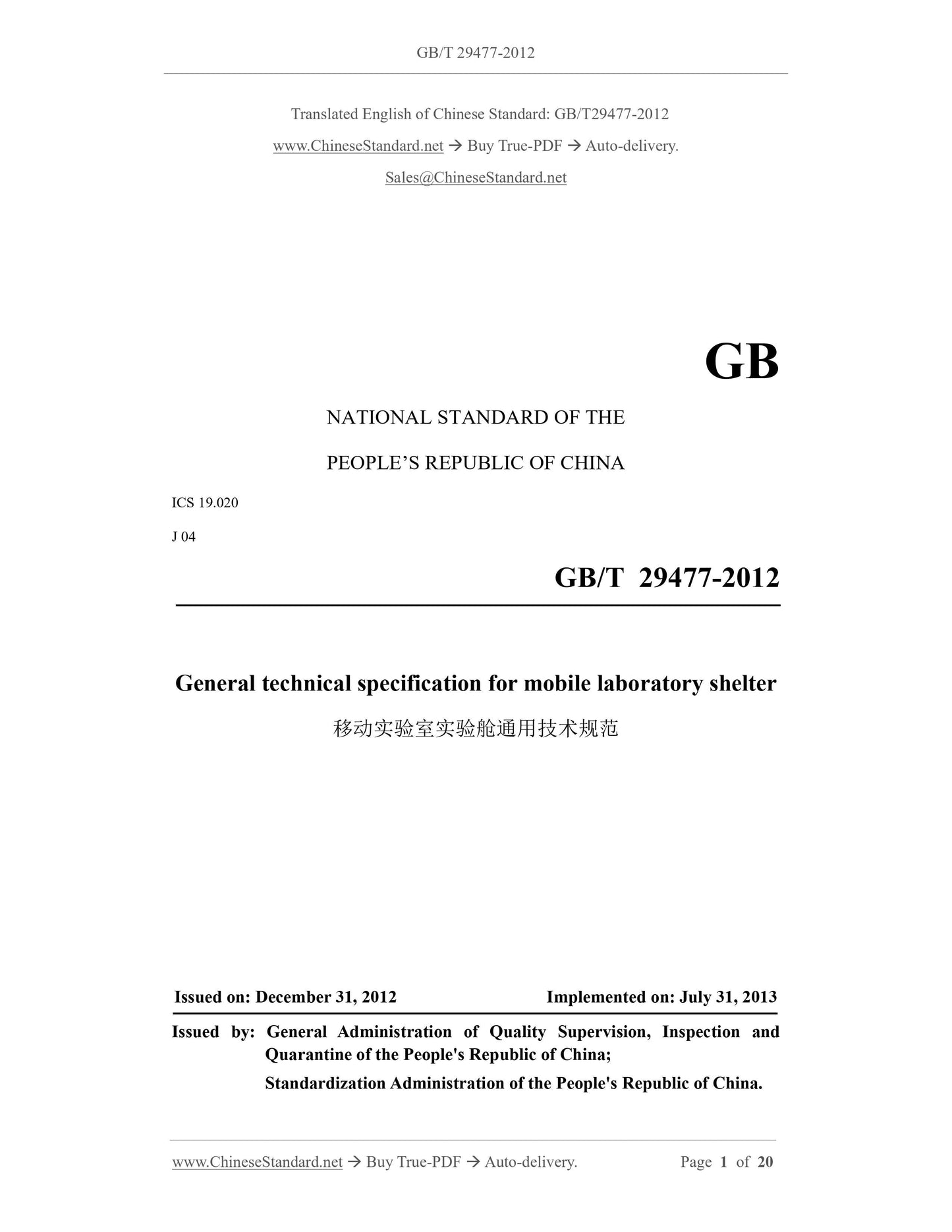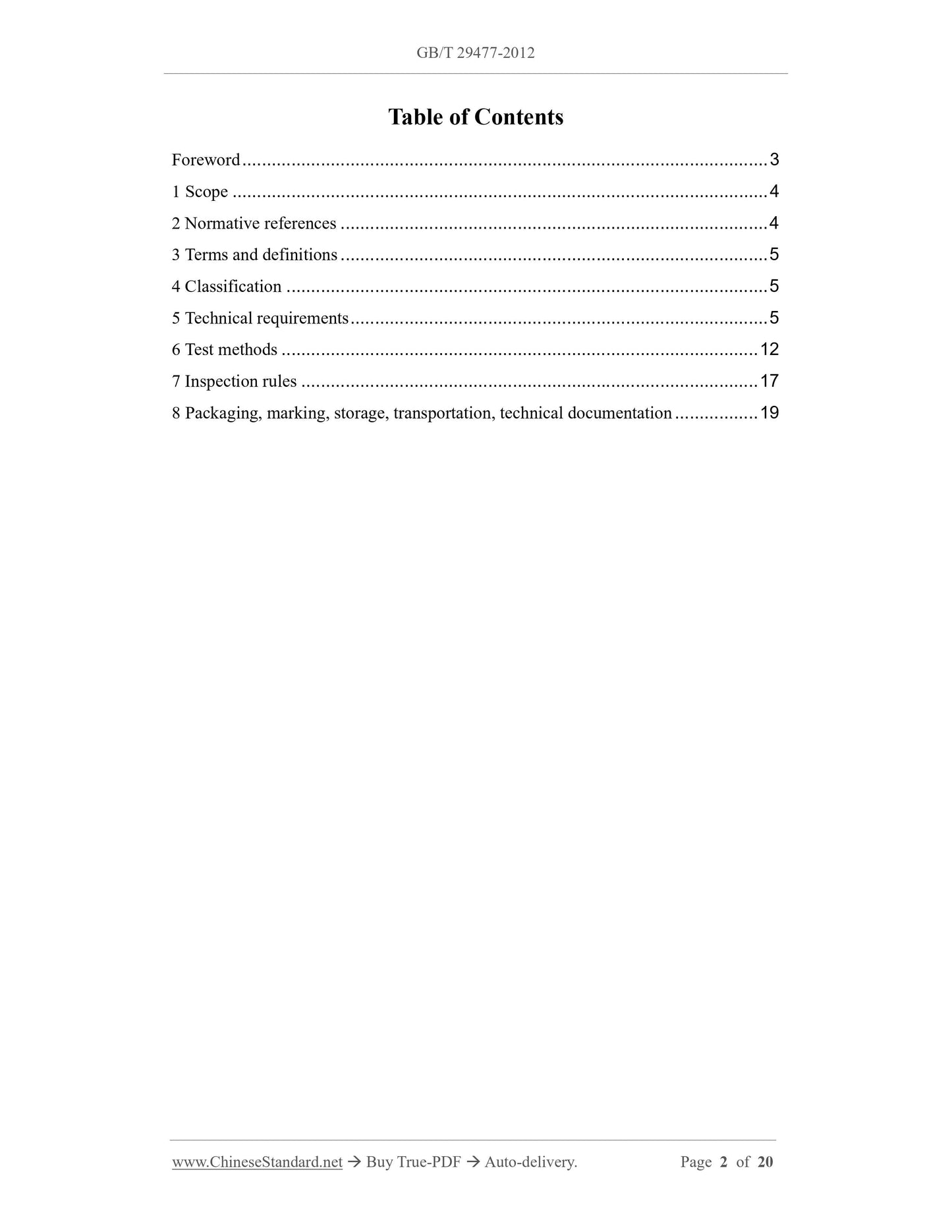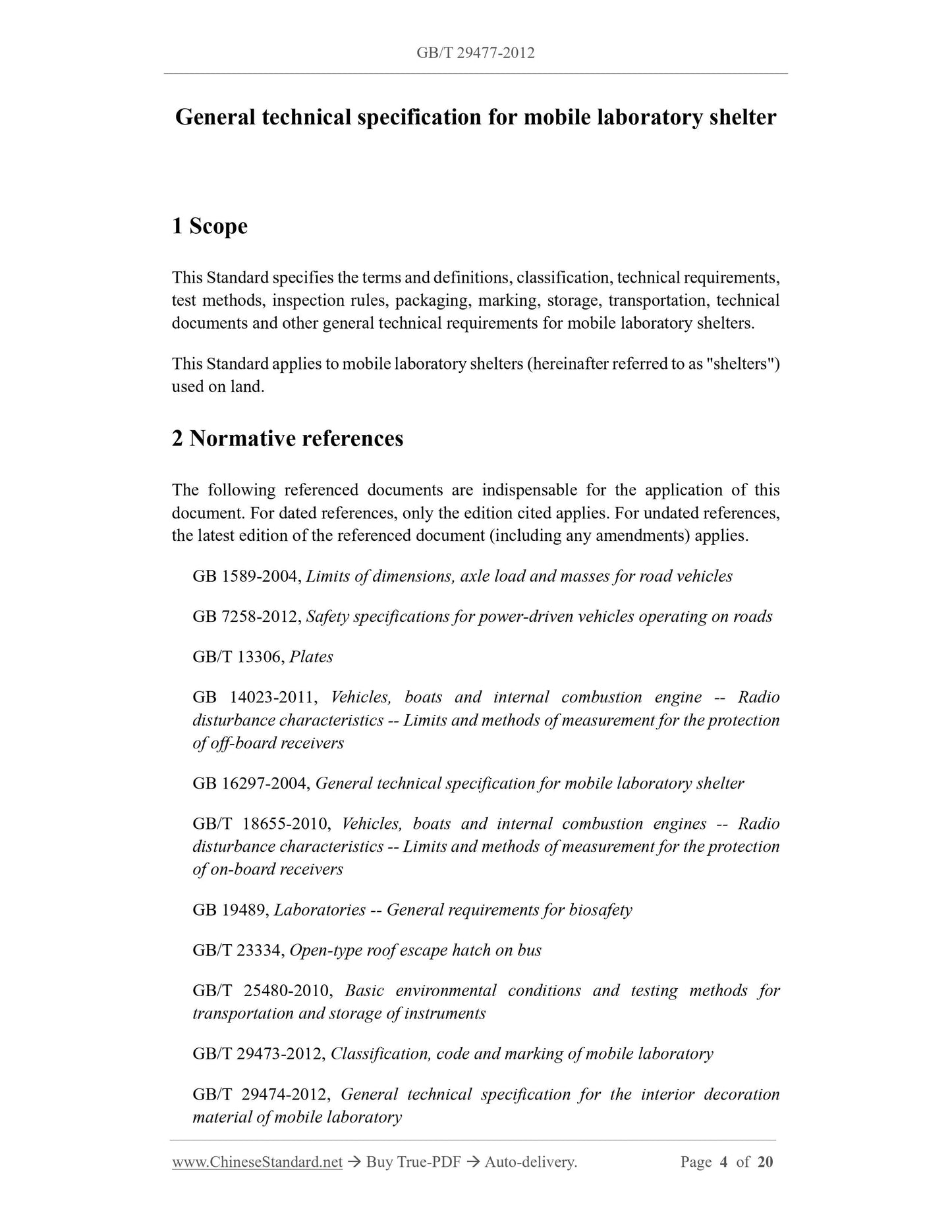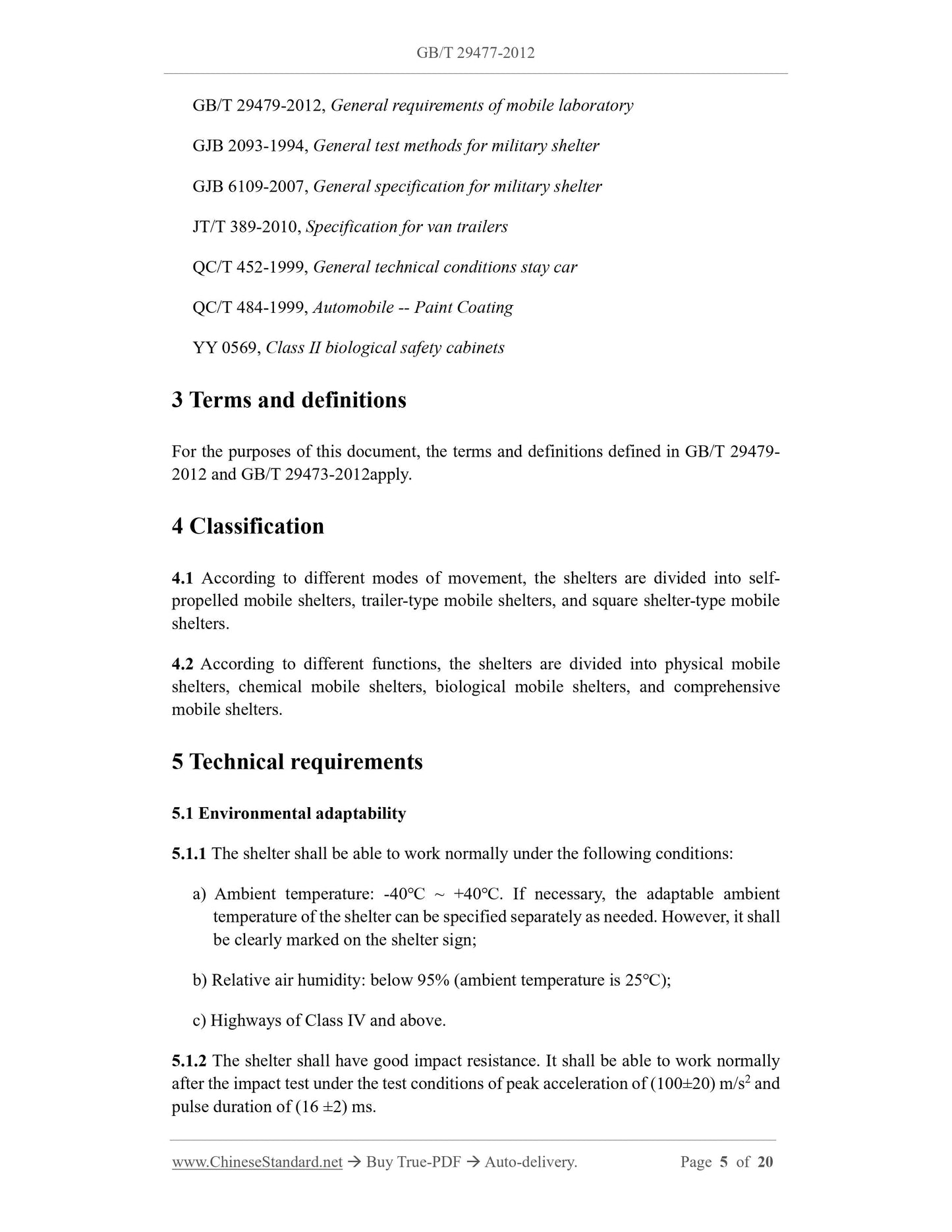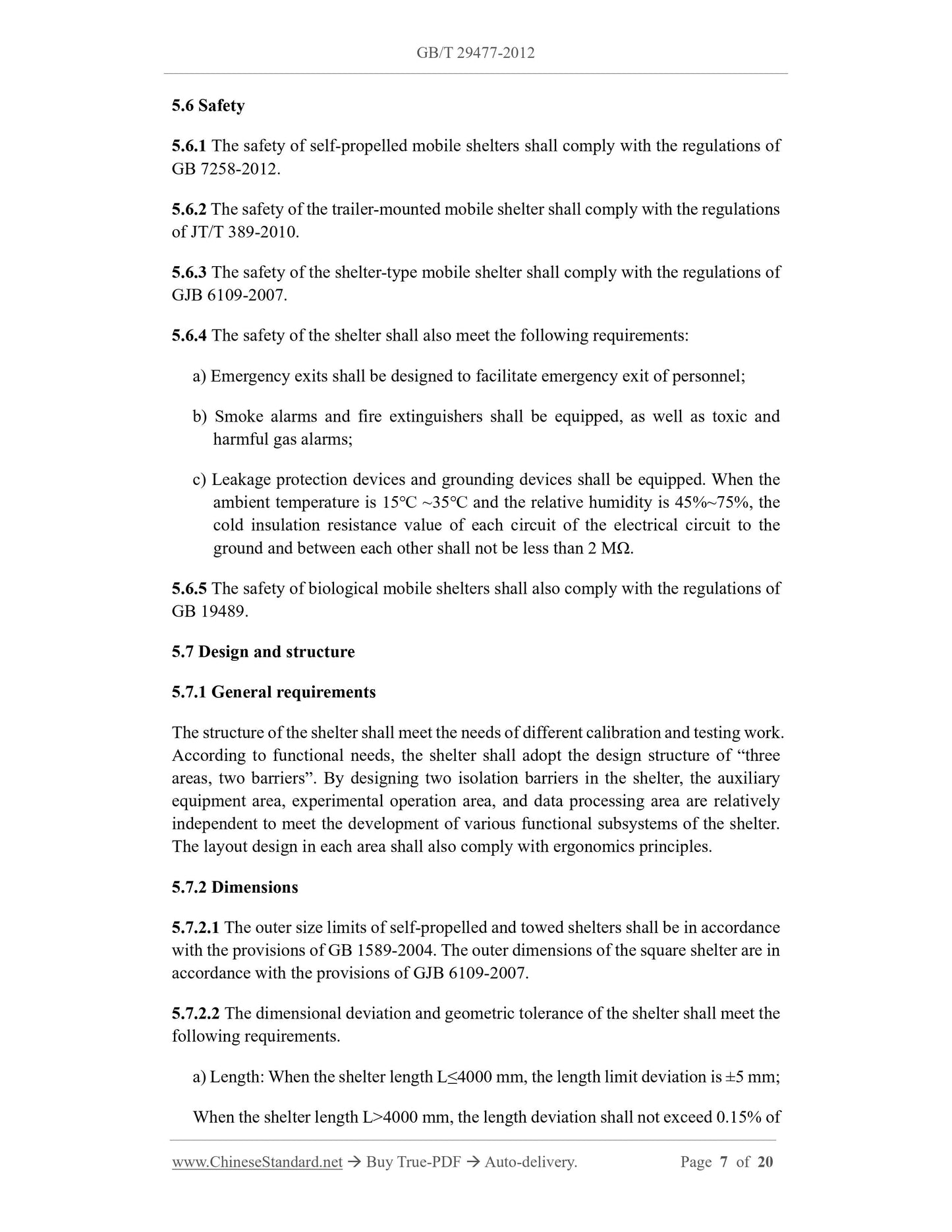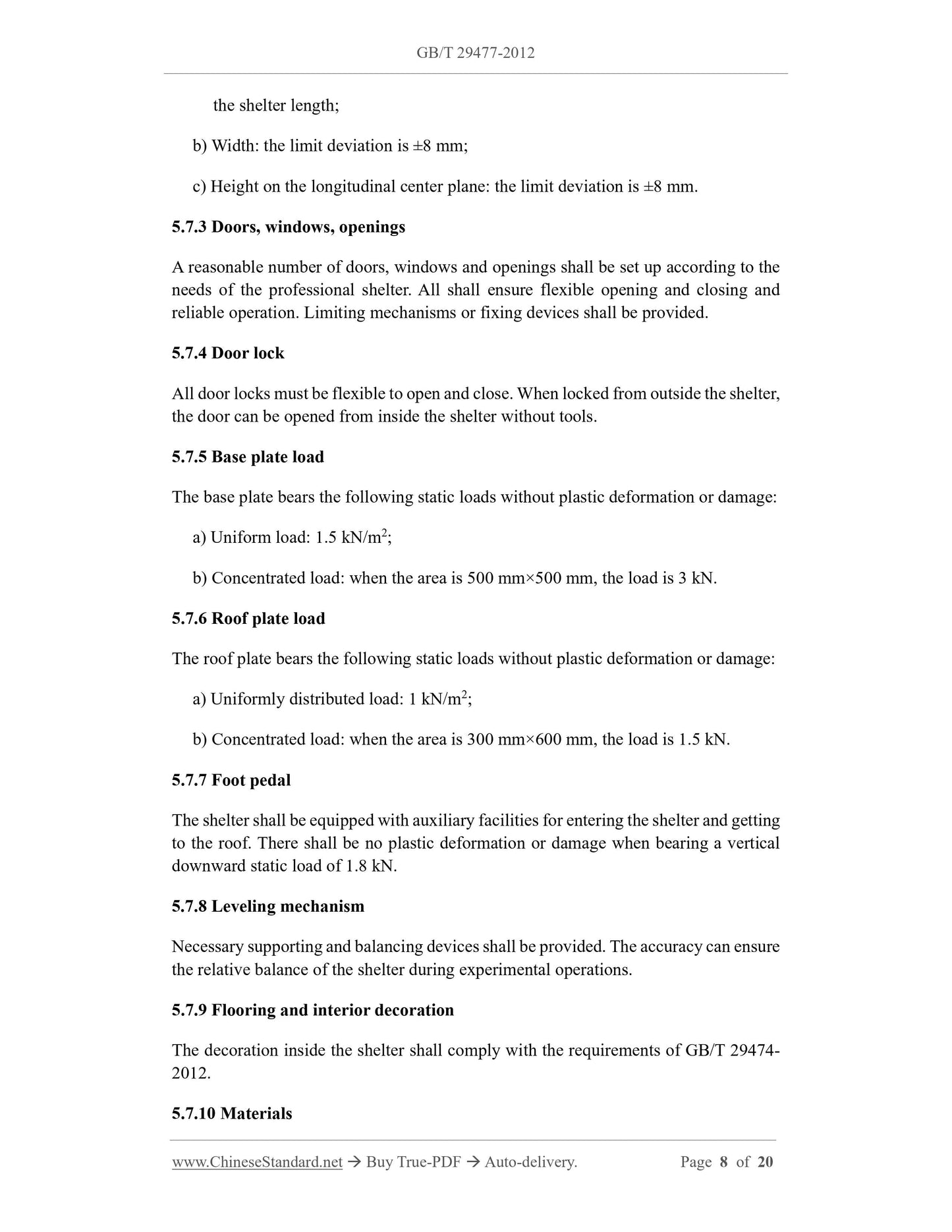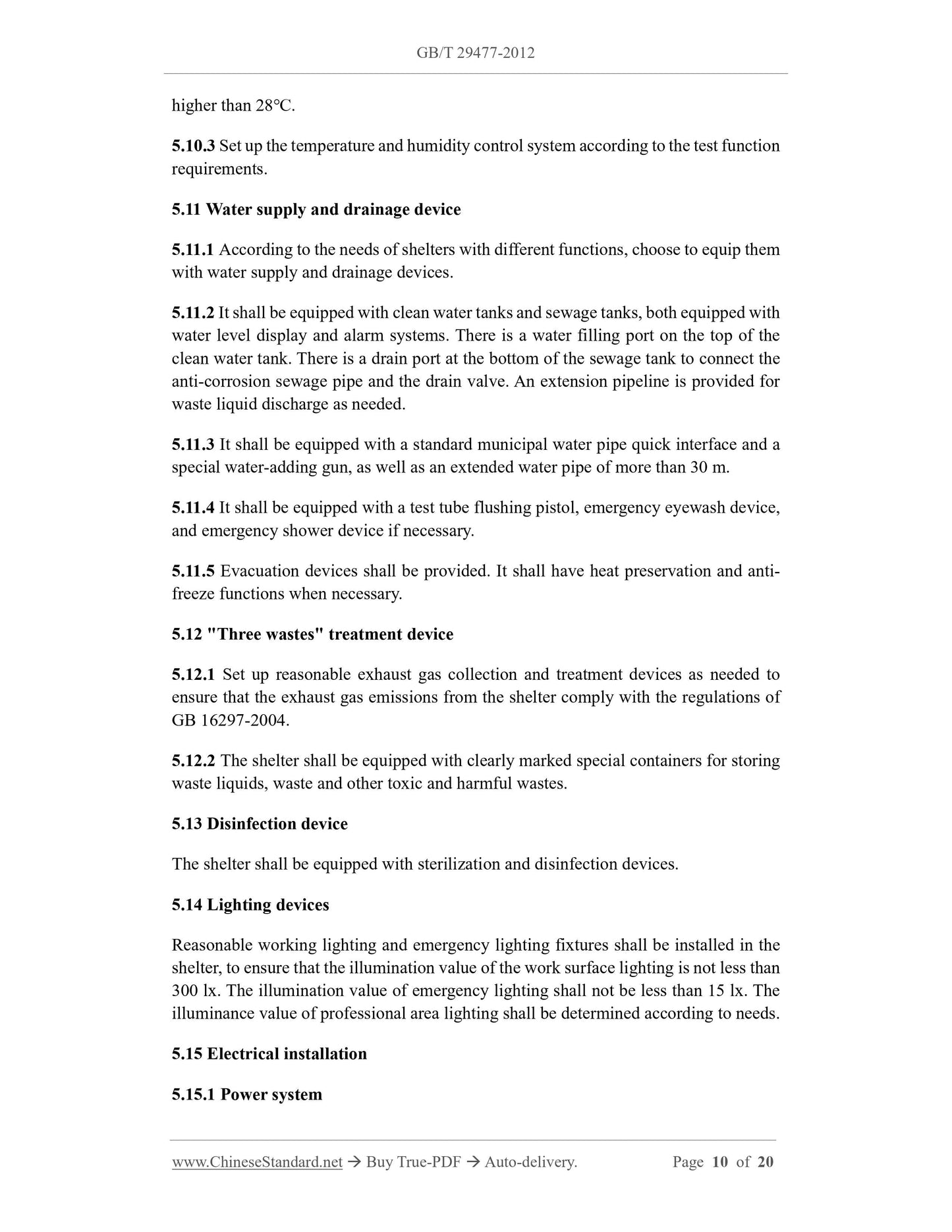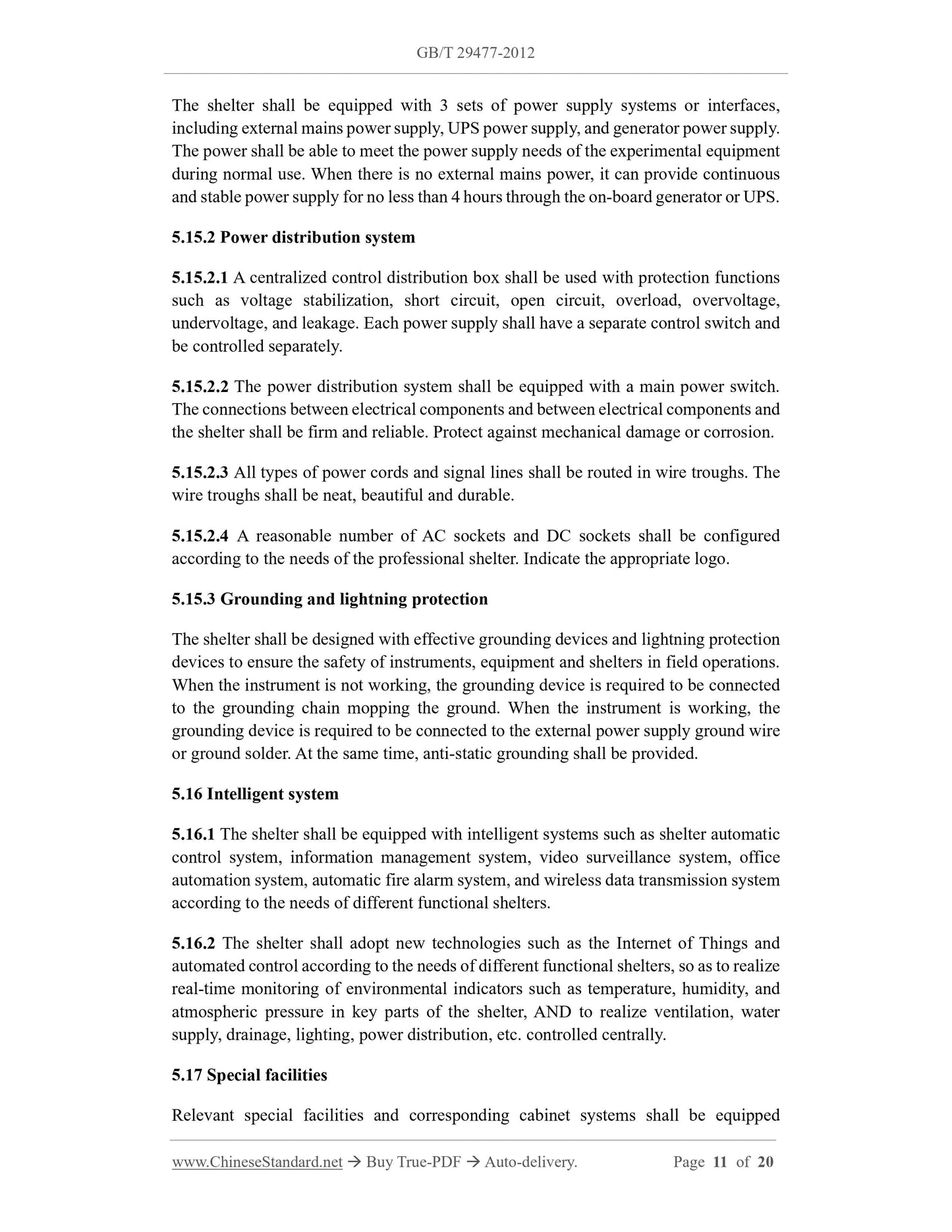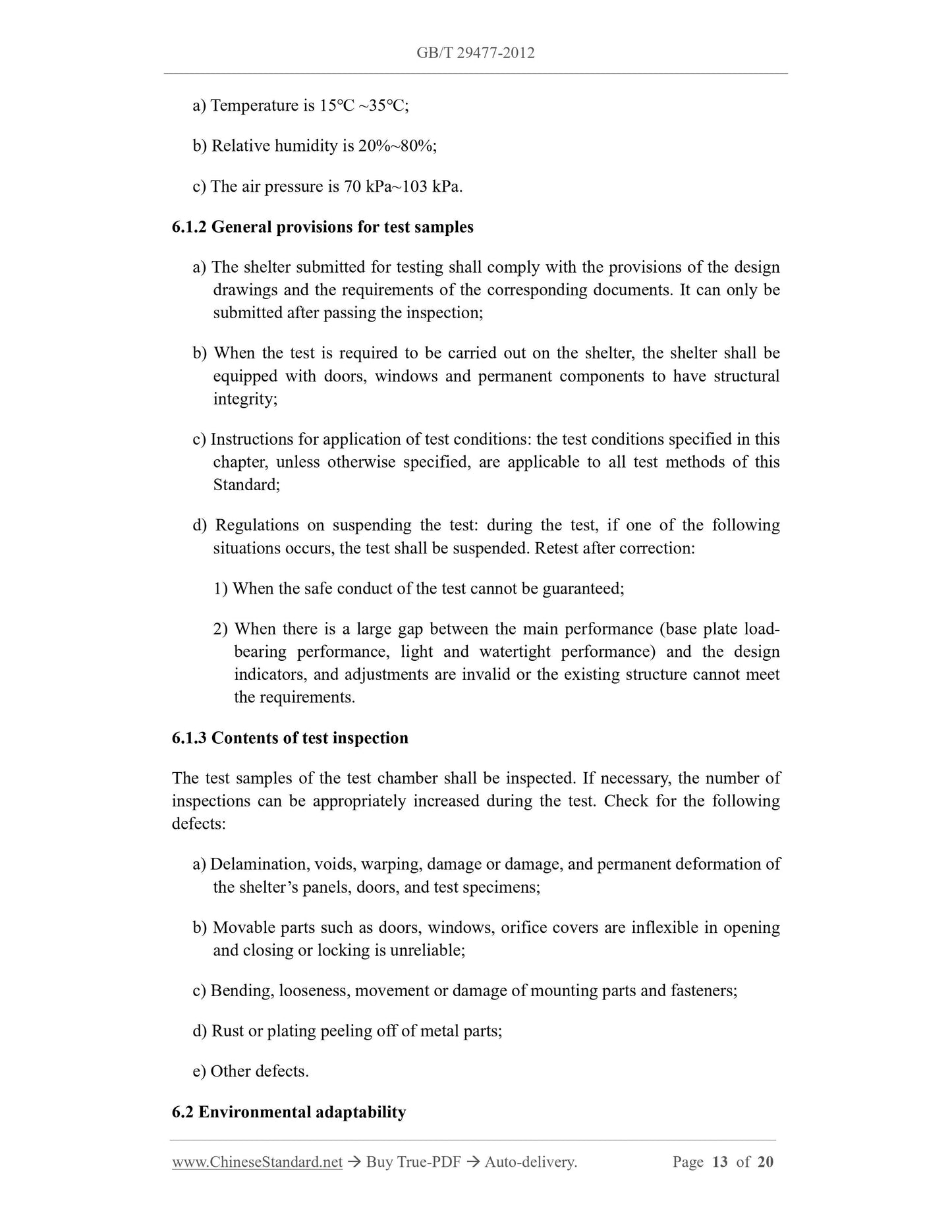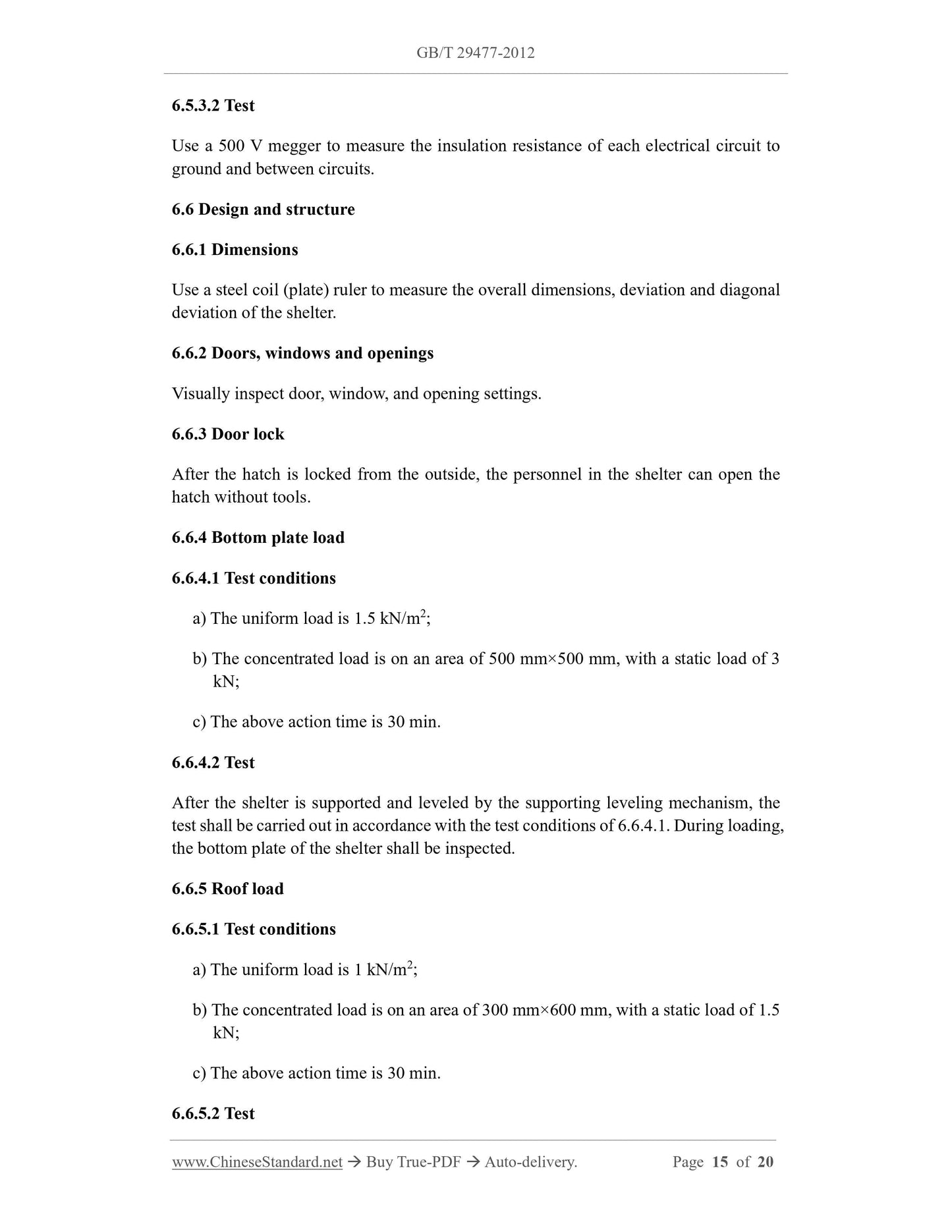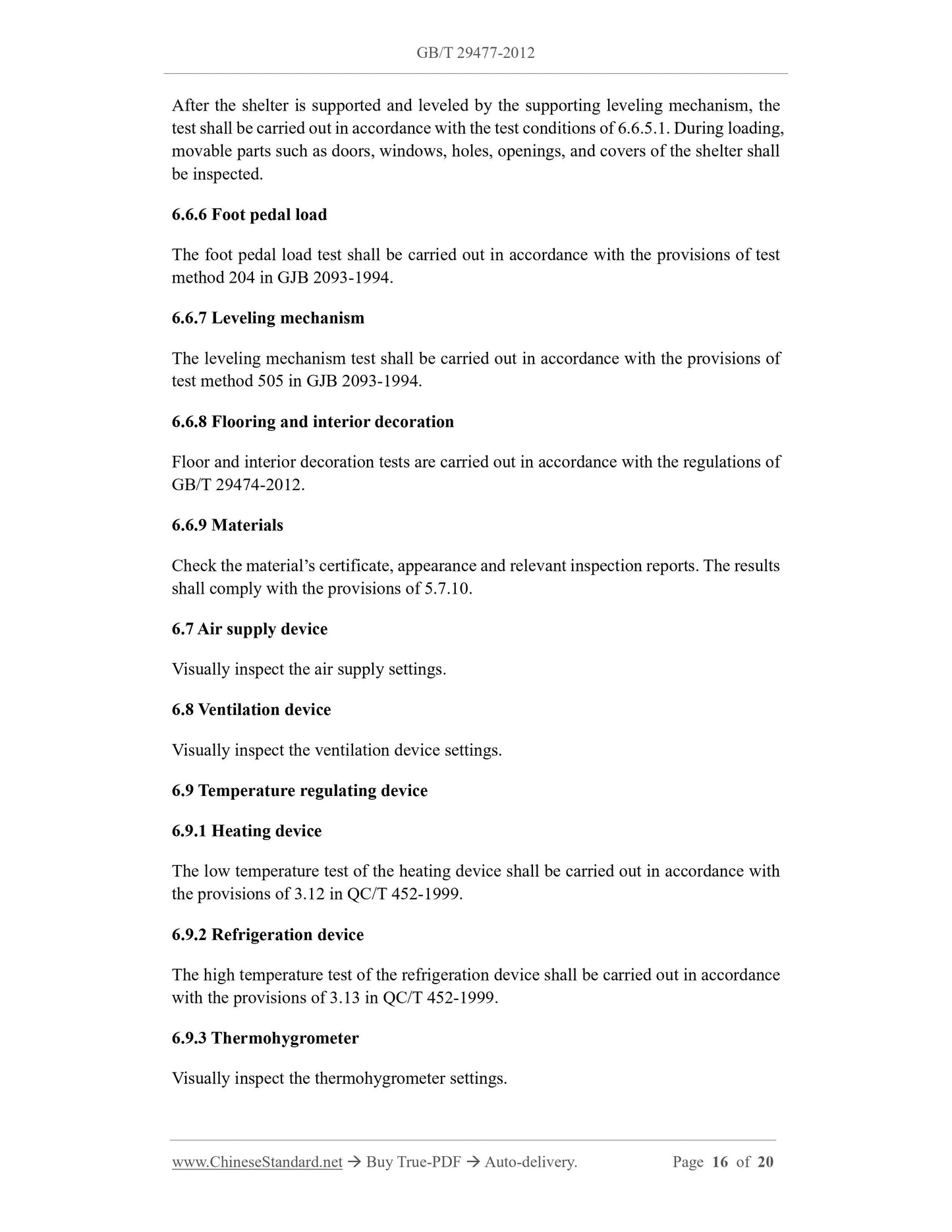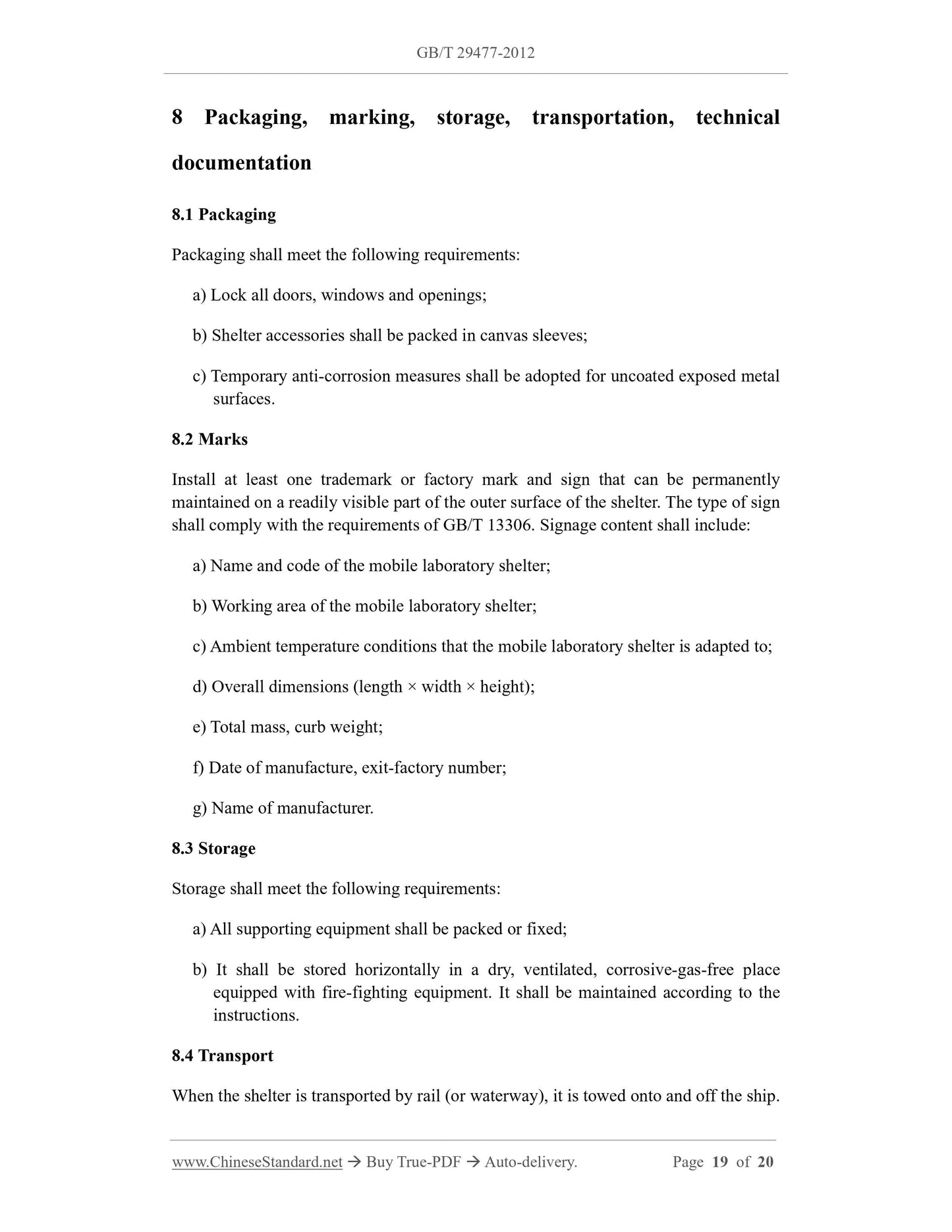1
/
of
12
www.ChineseStandard.us -- Field Test Asia Pte. Ltd.
GB/T 29477-2012 English PDF (GB/T29477-2012)
GB/T 29477-2012 English PDF (GB/T29477-2012)
Regular price
$220.00
Regular price
Sale price
$220.00
Unit price
/
per
Shipping calculated at checkout.
Couldn't load pickup availability
GB/T 29477-2012: General technical specification for mobile laboratory shelter
Delivery: 9 seconds. Download (and Email) true-PDF + Invoice.Get Quotation: Click GB/T 29477-2012 (Self-service in 1-minute)
Newer / historical versions: GB/T 29477-2012
Preview True-PDF
Scope
This Standard specifies the terms and definitions, classification, technical requirements,test methods, inspection rules, packaging, marking, storage, transportation, technical
documents and other general technical requirements for mobile laboratory shelters.
This Standard applies to mobile laboratory shelters (hereinafter referred to as "shelters")
used on land.
Basic Data
| Standard ID | GB/T 29477-2012 (GB/T29477-2012) |
| Description (Translated English) | General technical specification for mobile laboratory shelter |
| Sector / Industry | National Standard (Recommended) |
| Classification of Chinese Standard | J04 |
| Classification of International Standard | 19.020 |
| Word Count Estimation | 14,118 |
| Quoted Standard | GB 1589-2004; GB 7258-2012; GB/T 13306; GB 14023-2011; GB 16297-2004; GB/T 18655-2010; GB 19489; GB/T 23334; GB/T 25480-2010; GB/T 29473-2012; GB/T 29474-2012; GB/T 29479-2012; GJB 2093-1994; GJB 6109-2007; JT/T 389-2010; QC/T 452-1999; QC/T 484-1999; YY |
| Regulation (derived from) | National Standards Bulletin 2012 No. 42 |
| Issuing agency(ies) | General Administration of Quality Supervision, Inspection and Quarantine of the People's Republic of China, Standardization Administration of the People's Republic of China |
| Summary | This standard specifies the mobile lab JEM terms and definitions, classification, technical requirements, test methods, inspection rules, packaging, labeling, storage, transport, technical documents and other general technical requirements. This standard |
Share
